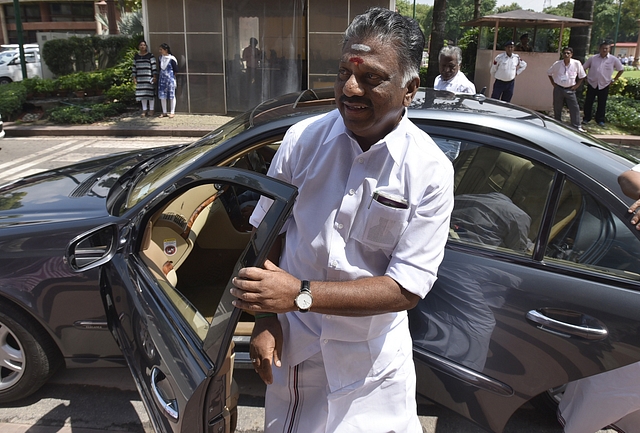
GST Is Helping Cut Tamil Nadu’s Revenue Deficit When Its Tax Collection Is Falling
Tamil Nadu is getting more of central share in taxes under GST than VAT. This comes when its tax collections are down.
Presenting the budget for the 2018-19 financial year, Tamil Nadu Deputy Chief Minister O Panneerselvam – who is in charge of the Finance Department – said that the state hoped to gain from the goods and services tax (GST) being implemented from 1 July 2017. The hopes for Tamil Nadu, one of the states that opposed GST implementation, stems from the fact that gap between the projected revenue with a growth rate of 14 per cent and the actual revenue had actually shrunk between July and February 2018.
LiveMint reported on 16 March that Tamil Nadu estimates a revenue of Rs 86,859 crore from GST during the current fiscal.
Panneerselvam, in his Budget speech, said Tamil Nadu had got Rs 632 crore as GST compensation from the Centre in addition to the actual revenue from GST collections. On 7 February, Tamil Nadu Fisheries Minister D Jayakumar, who represents the state in the GST Council, said that Tamil Nadu received Rs 23,317 crore under GST between July and December 2017. This was higher than Rs 19,017.87 crore the state got under the previous value-added tax (VAT) system.
A look at the state’s finances from 2013-14 fiscals reveals that the share of taxes Tamil Nadu has been receiving from the Centre has been on the rise. The Centre’s share would have more than doubled if the central share turns out to be as projected by Tamil Nadu. The Centre’s share has been in the double figures in the last couple of years but it is expected to be 17 per cent in the current fiscal.
The Centre’s rising share has been despite a fall in the revenue Tamil Nadu has been generating from tax on commodities and services.
The drop could be lower because of lower agricultural output and lower prices besides other factors such as a slowing economy. Revenue for Tamil Nadu from tax and sales is estimated to have dropped from Rs 63,233 crore in 2016-17 to Rs 49,390 crore last fiscal. It is expected to slip further to Rs 44,427 crore. One reason for fall in tax is that Tamil Nadu has raised registration fee for the realty sector besides cutting the guideline value.
Tamil Nadu’s revenue generation has also been hit by the ruling All India Anna Dravida Munnetra Kazhagam’s decision to close government-run liquor shops. More importantly, last year many liquor shops had to be shut in view of the Supreme Court’s order to close outlets within 100 metres of the national highways. The apex court later clarified its ruling, resulting in most of the shops resuming their operations.
The Centre has also been giving grant-in aid that has been on the rise. The aid is given as tax compensation. The aid also comprises funding for various programmes and projects.
On the other hand, the state’s own tax revenue has been witnessing some ups and downs in the last few years. During 2016-17, revenue collection dropped 11 per cent but it has recovered since then. For the current fiscal, it is likely to be 11 per cent higher after a 14 per cent recovery last fiscal.
The recovery in the state’s own revenue is because of a higher revenue being expected from sales of petrol, diesel, liquor and a higher excise duty collection.
Going forward, Tamil Nadu is expected to gain from the 15 per cent per annum average growth that central taxes are registering.
Thanks to the Centre’s contribution, Tamil Nadu revenue deficit is projected to drop to Rs 17,490 crore this fiscal against Rs 18,370 crore in 2017-18. In a way, GST, which Tamil Nadu opposed, is helping the state bridge the gap in its finances to some extent.